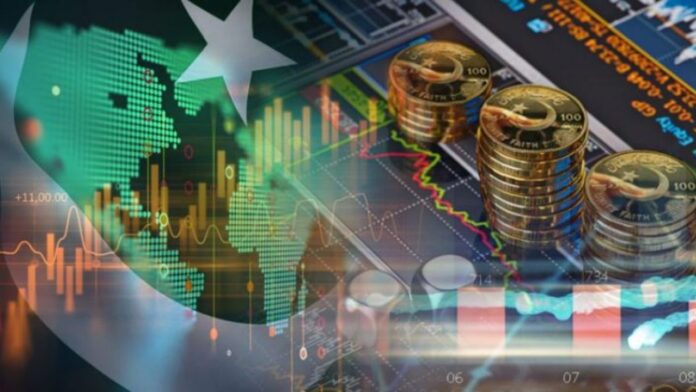Pakistan’s present economic model, distinguished by its dependence on agriculture, textile-dominated manufacturing, and remittances, is progressively perceived as unable to address the demands of the contemporary global economy. In contrast, countries like India, Bangladesh, and China have adopted more adaptable and diverse economic models, leading to robust growth and progress.
Recently, Pakistan’s economy has grown more slowly than China’s, Bangladesh’s, and India’s. Pakistan’s economy, for example, is expected to expand by 4 percent by 2023, lower than India’s 7 percent, Bangladesh’s 6.5 percent and China’s 5.5 percent. These differences arise because these countries have different economic and industrial approaches. Pakistan was particularly active in its old industries, while India and China spent heavily on new technologies and improved factories. This allows for more creativity and new ideas. Bangladesh has also done well in textile manufacturing, attracting much foreign investment.
Another area where Pakistan’s economic policy exhibits limitations is in its energy sector. Pakistan relies heavily on imported energy, which strains foreign reserves and increases its trade deficit. China and India have significantly allocated resources to renewable energy, decreasing their reliance on imports and promoting sustainable development. Bangladesh has also been intensifying its emphasis on renewable energy sources.
Furthermore, Pakistan has a less varied export base than its neighbouring countries. Pakistan’s exports primarily focus on textiles and agricultural goods, which are sensitive to fluctuations in global prices and have low value-addition. On the other hand, China’s exports include everything from technology to machinery, making it the biggest exporter in the world. India has diversified its exports to encompass medicine, computer programmes, and high-value services. Bangladesh is progressively broadening its manufacturing sector by extending its operations beyond clothing production and entering the transportation and pharmaceutical sectors.
India has achieved substantial advancements in its economic transformation by implementing a mixed-economy policy. Following the economic reforms of 1991, India shifted from an agricultural economy to one emphasising service and industrialization. In particular, IT and services industries have emerged as a critical boom area, making India a global hub for IT services and software development. Moreover, India witnessed a boom in production under the ‘Make in India’ initiative, which aims to convert India into a global manufacturer.
On the other hand, China has adopted an export-led growth model, which is spectacularly successful. Since the economic reforms led by Deng Xiaoping in the 1970s, China has transformed itself into a “factory of the world”, focusing on manufacturing and exporting services, with massive investments in industry, education and technology to support this model. China’s model is characterized by high levels of banking, massive FDI, and integration into global markets, transforming it into the world’s second-largest economy.
In 2015, China began to focus on establishing an innovation-driven growth model. This restructuring aims to boost the economy in the value chain, reduce its dependence on cheap exports, and improve domestic consumption and other production. The main components of this model encompass the advancement of research and development (R&D), cutting-edge technologies like artificial intelligence, renewable energy, and biotechnology, as well as the promotion of employment opportunities. China’s strategic plan, “Made in China 2025,” is explicitly designed to elevate China to a prominent position in high-tech manufacturing despite already being one of the world’s top contenders. This method deviates from the old paradigm, primarily emphasising mass production and cost-effective transportation.
Pakistan may utilize global cooperation and external financial resources to harness its capital and experience to advance its technology and innovation industries. Pakistan should view Bangladesh’s achievement in attracting foreign investment in its textile industry and India’s success in its IT sector as feasible models.
Bangladesh’s growth model is characterized by its extraordinary achievements in the textile industry, making it different from other countries. It used cheap labour to become one of the world’s biggest cloth makers. This industry has contributed to economic growth and transformed society and the economy, such as infrastructure for women’s empowerment and poverty alleviation. Bangladesh has been trying to expand its economy in recent years through investment and has entered industries such as information technology, shipping and pharmaceuticals.
Progress made in neighbouring nations offers valuable perspectives for Pakistan. China’s progress towards an innovation-based growth model highlights the importance of high-value technology and services in modern economic growth. With its current focus on traditional agriculture and textiles, Pakistan may adopt an innovation-based growth model to achieve sustainable growth towards remaining competitive. This includes structural reform and capital investment in education, digital infrastructure, and a climate conducive to research and innovation.
Pakistan’s economic system is fundamentally different. Pakistan’s economic potential is constrained by its focus on traditional industries, making its economy more vulnerable to external disturbances and fluctuations in the global market. The main limitation of this model is a country with vital services, such as the addition of low-cost textiles, as well as promising areas for future expansion. Regarding the poor allocation of resources to energy technology, insufficient investment can be ascribed to the inadequate allocation of resources towards public education and research and development (R&D), which are crucial for fostering technological innovation and advancing knowledge.
Pakistan must significantly shift its strategy to implement a progressive development plan. First, there is an urgent need to dramatically expand education funding, focusing on STEM fields (science, technology, engineering and mathematics). These changes will facilitate the workforce needed to drive technological progress and innovation. Additionally, structural change should be implemented to encourage innovation and entrepreneurship. This includes simplifying labour laws, strengthening the protection of intellectual property rights and providing tax benefits for research and development,
Furthermore, Pakistan must build a robust digital and physical infrastructure to support a modern economy. Lessons can be drawn from China’s massive infrastructure investments, a cornerstone of its monetary growth. Similarly, fostering public-personal partnerships, as visible in India’s IT sector, can stimulate innovation and boost various industries.
Another critical aspect is diversifying the economic system to reduce dependence on traditional sectors. By exploring new growth areas, including renewable power, technology, and excessive-tech production, Pakistan can create new industries and activity possibilities. Bangladesh has efficaciously hired this diversification approach in expanding past its garment industry.
Finally, Pakistan may utilize global cooperation and external financial resources to harness its capital and experience to advance its technology and innovation industries. Pakistan should view Bangladesh’s achievement in attracting foreign investment in its textile industry and India’s success in its IT sector as feasible models.























